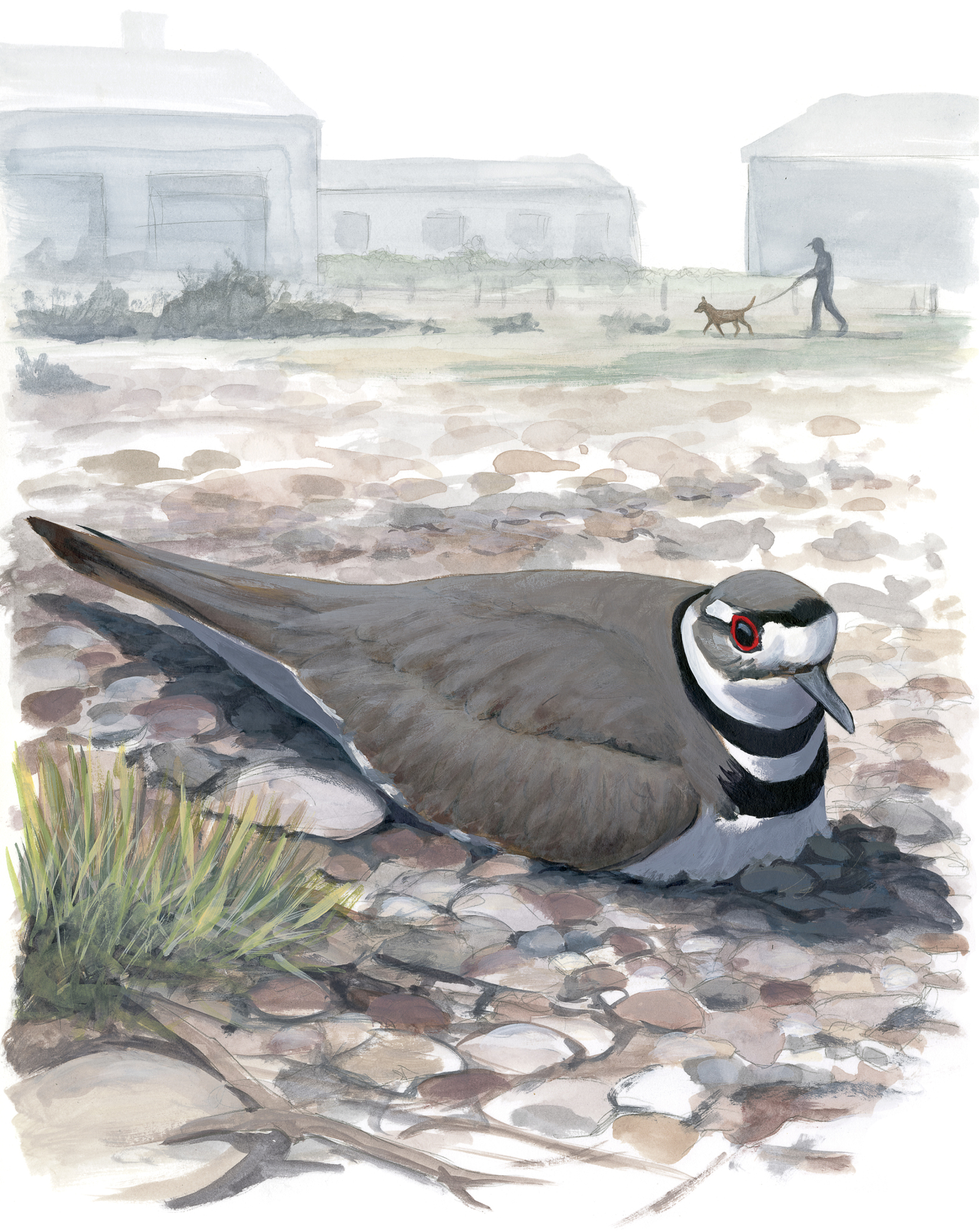Plovers

A Killdeer nesting in a park
To keep their eggs and young safe from predators, ground-nesting birds like the Killdeer use camouflage and trickery.

A Killdeer nesting in a park
To keep their eggs and young safe from predators, ground-nesting birds like the Killdeer use camouflage and trickery.
■ Eggs that are simply laid on open ground are very vulnerable to predators. The primary defense strategy is for the eggs to remain undiscovered, and the birds have several adaptations for that. The eggs are cryptically colored, or camouflaged, and there is evidence that the adults choose to nest on ground that matches their eggs. The nest is simply a slight depression with no structure that might attract the attention of predators. The adult is also cryptically colored, and actively misdirects predators with distraction displays. But all of this is visual camouflage, and a major threat comes from predators hunting by smell, especially at night. To protect against this, the preen oil of Killdeer and other ground-nesting birds changes during the nesting season to a different chemical compound with no odor. This effectively masks the smell of the incubating bird and makes them less likely to be found by predators such as skunks and foxes.

The camouflaged eggs of a Killdeer, laid in a faint depression on open ground
■ A few species of small plovers live and nest on sandy beaches just above the high tide line: the Piping Plover in the eastern U.S. and the Snowy Plover in the West. This puts them into direct competition with millions of humans who use the same sandy beaches for recreation. There are only about twelve thousand Piping Plovers in the world, and many of them nest on beaches along the eastern coast of the United States, from New Jersey to Massachusetts. On most of these beaches, the survival of the species now depends on the help of some humans to educate other humans and keep them (and their dogs, vehicles, kites, and other threats) away from the nesting plovers. If the plovers are protected from disturbance at critical times, they can nest successfully even on a popular beach.

Piping Plover